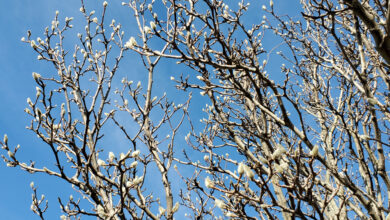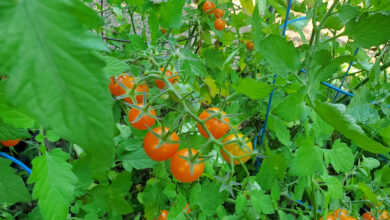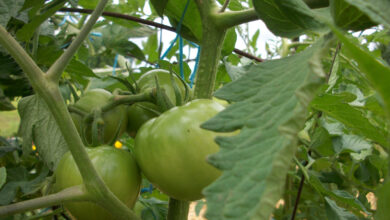Tomatoes: Tips for successful crop
Now that vegetable gardens are being planted, it’s time once again to focus on the most popular of vegetable garden plants – the tomato. Here are some tips for this year’s crop.

According to the National Gardening Association, tomatoes like soil pH in the 6.0 to 6.8 range – which is the range in which most vegetables grow best. On the pH scale, 7.0 is neutral, so tomatoes like a slightly acid soil.
Inexpensive kits for testing soil pH are available and you should make a practice of testing your soil every 3-5 years. If your soil pH is too low, you will need to add lime; if it is too high, sulfur is added to the soil to lower pH. Remember that soil pH affects how well plants are able to make use of nutrients in the soil, so it does impact how well your garden plants thrive.
Cornell University notes that tomatoes do better if planted deeper than they were in the containers in which you purchased them. They can be set in the ground with the soil level just below the lowest leaves and roots will form along the buried stem, creating a strong root system.
Make sure your tomatoes are planted in an area that gets 6-8 hours of sunlight each day and is well drained. To reduce the risk of disease, don’t plant where you have recently grown crops such as potatoes, peppers, eggplant or tomatoes.
Mulching plants can help suppress weeds and hold in soil moisture. This is important as tomatoes need a consistent supply of moisture and must be watered if there is less than one inch of rain per week. Evenly moist soil helps to prevent blossom end rot and can also help prevent cracking after the fruit absorbs water too fast after a heavy rain following dry conditions.
Cornell University says that raised beds, black plastic mulch and providing moisture through drip irrigation can help your total yield. Support for plants can also affect performance.
Staking is helpful for indeterminate varieties, as is pruning, which will hasten the first harvest, improve fruit quality and make harvesting easier. Cornell explains that staked and pruned plants are more susceptible to blossom end rot and sunscald, but allowing indeterminate varieties to sprawl takes up more space and increases the chance of disease.
Tomato stakes should be put in place soon after planting and should be driven 8-10 inches into the ground. Prune the plants by removing suckers – which are stems growing from where leaf stems meet at the main stem – when they reach 2-4 inches long. Do not remove leaves which shade fruit to help prevent sunscald.
It is also possible to grow several tomato plants in a row between heavy duty stakes or posts spaced about 4 feet apart. Use twine to weave in and around posts and plants. Tomato cages are another way to provide support for plants.
According to Cornell, avoid excessive nitrogen applications. This can cause excessive foliage and poor fruit set. Poor fruit set can also be caused by heavy rainfall or temperatures which are too high – above 90 degrees; or too low – below 55 degrees.
To help control diseases such as blossom end rot, early and late blights and Fusarium and Verticillium wilts, avoid wetting foliage when watering and remove weeds to improve air circulation. If plants become affected by disease, remove diseased plant parts when plants are dry and remember to rake and dispose of diseased leaves and stalks.





